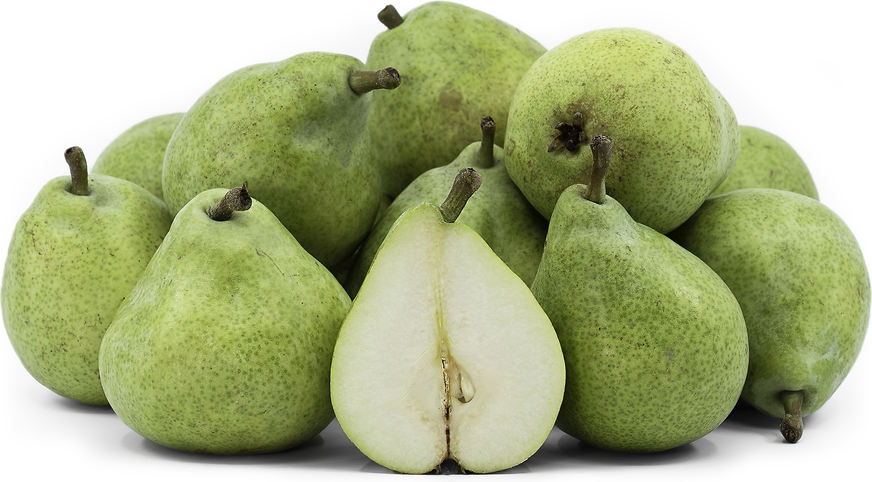


Kalle Pears
Estimated Inventory, lb : 0
This item was last sold on : 08/30/23
Description/Taste
Kalle pears are medium to large in size, averaging seven centimeters in diameter, and have a pyriform, or traditional pear shape with a wide, bulbous bottom and a tapered, rounded neck. The smooth, thin skin transitions from shades of crimson and maroon to bright red hues when ripe. The skin is also covered in prominent lenticels or pores and connects to a thick, brown-green stem. The ivory to cream-colored flesh is moist, crisp, fine-grained, and creamy with a soft, floral aroma. When ripe, Kalle pears are soft and very juicy with a mild, sweet-tart flavor.
Seasons/Availability
Kalle pears are available in the late summer through winter.
Current Facts
Kalle pears, botanically classified as Pyrus communis, are a late summer variety and are members of the Rosaceae family along with apples and apricots. More commonly known as Red Clapp’s, Starkrimson, and Red Crimson, Kalle pears are one of the first varieties to make an appearance at the beginning of pear season and are a mutation of the famous green Clapp’s favorite pear variety. Kalle pears are valued for their bright color and sweet flavor and are predominately consumed fresh to showcase the unusual jewel-toned skin.
Nutritional Value
Kalle pears contain calcium, potassium, vitamin C, some copper, and dietary fiber.
Applications
Kalle pears are best suited for raw applications as their bright red flesh is showcased when consumed fresh, but they can also be used for baking and canning. They can be sliced and mixed into pasta salads, fruit salads, and green salads, served as a topping on pizza, paired with strong cheeses on a charcuterie board, served with pesto and fresh cheese as an appetizer, made into pear kimchi, or blended into smoothies, cereal, and yogurt bowls. They can also be used in some desserts such as popovers, bread, and cakes. Kalle pears compliment cheeses such as burrata, goat, gorgonzola, and blue, hazelnut, almonds, mint, cilantro, radicchio, kale, arugula, jicama, carrots, garlic, onions, meats such as pulled pork, beef, and chicken, strawberries, kiwi, apple, lime, avocado, panzanella, quinoa, and cacao. They will keep up to three weeks when stored in the refrigerator and for a couple of days when stored at room temperature.
Ethnic/Cultural Info
Kalle pears have many names which reflect the colorful history of the pear. The name Red Clapp’s stems from the originally discovered fruit as it was a mutation found on a green Clapp’s favorite pear tree and Kalle is the last name of the grower who discovered the new mutation. Starkrimson is a trademarked name that was given to the variety later on as it developed after the pear’s discoverer transferred the rights to grow the pear to Stark Bros Nursery in Missouri. Unlike other varieties, Kalle pears are unique as they are deemed ripe by the color of their skin and should not be checked by using the neck test. These pears transform from a deep red to a bright red when ripe and will ripen from the inside out. If judged by the feel of the neck, the fruit will most likely be overripe before the neck shows signs of softness.
Geography/History
Kalle pears were originally discovered as a sport, or mutation, on a Clapp’s tree in Missouri by Adrian Kalle in Van Buren County, Michigan in the early 1950s. Kalle then transferred the rights to Stark Bros Nursery in 1952, and a few years later they were introduced by Stark Bros as Starkrimson in 1956. Today, Kalle pears can be found at farmers markets and specialty grocers and are grown in the United States, especially in the Pacific Northwest, Chile, and New Zealand.
Recipe Ideas
Recipes that include Kalle Pears. One
| Baking a Moment |
|
Pear Dumplings |
| A baJillian Recipes |
|
Fresh Pear Cake with Whipped Brown Sugar Buttercream |
Podcasts










